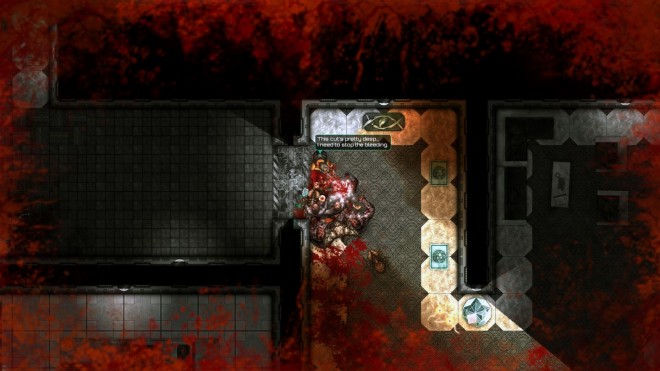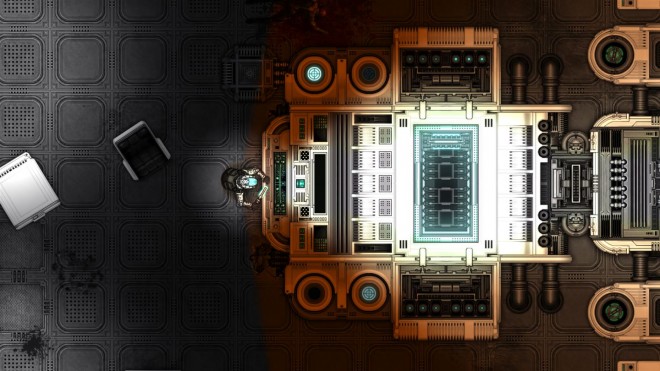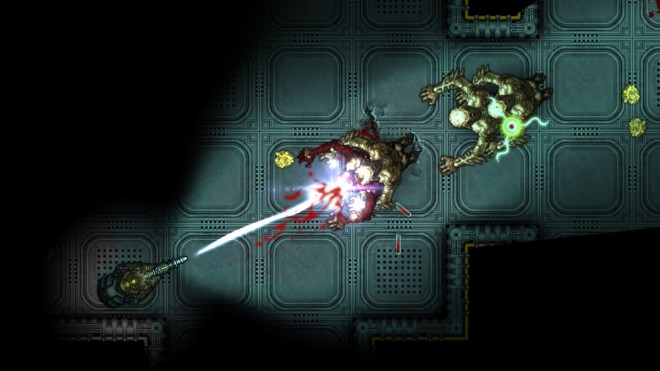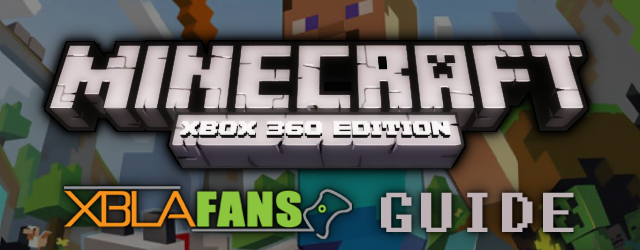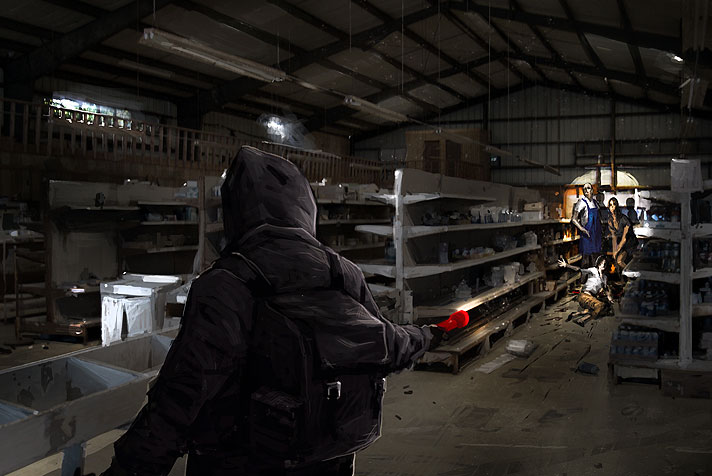Whenever I speak to someone who doubts the credibility and validity of indie games as a rich source of unique and exciting content, I often hear the argument that such games lack the depth or complex gameplay of their bid budget peers. Well, if that ever was true, it certainly isn’t now. Subterrain is easily the most complex game I’ve played in years and possibly ever on a console. Whilst this is both a blessing and a curse because it’s as daunting as it is interesting, most of the complexity is the result of the meticulous design that makes Subterrain stand out among the crowd.
Set on a Martian colony, players take on the role of Dr. West, a man who finds himself in prison for reasons that will not be made immediately apparent. He awakens in his cell to find the prison deserted, with only the mutilated bodies of inmates and guards as his company. From here, players must guide Dr. West from the prison to the colony’s command hub, and then to the various facilities that make up the rest of the Martian outpost. These requirements include the same kind of basic needs found in more or less all survival games such as hunger, thirst and sleep. Subterrain also introduces a large number of other needs both personal to Dr. West and at a broader level across the entire colony, or at least in relation to the facility that West is in. This is where the complex systems in Subterrain really begin to show themselves.
Here’s what I liked:
Complex requirements part 1 – There are numerous facilities to visit in Subterrain, and each of them is accessed via the central shuttle system. Unfortunately, the colony’s main generator is failing, and at the outset of the game, only one or two facilities can be powered at once. Each facility also has its own temperature and oxygen regulation systems that are also failing. From the central power system to the locational thermal regulation systems, everything can be upgraded, and all of it must be managed carefully and largely manually. West soon locates his own personal regulation systems, but these carry a limited charge (and again can be upgraded) so it is necessary to restore the environmental support at each location. Add this complex, sci-fi housekeeping to the more mundane need for food, drink and the occasional toilet stop, and there is a lot to manage. Thankfully, Subterrain rarely (if ever) feels as if it is asking the player to undertake a series of boring chores. There is always a reason or purpose behind wanting to improve the colony’s systems, and therefore the cycle of recycle, repair, research and upgrade never becomes too stale.
Survival instinct – There are few other games that feel as claustrophobic and foreboding as Subterrain does in the beginning. The procedurally generated corridors and rooms are universally dark and dingy, with few home comforts. This gives Subterrain a unique artistic vision that reminds me of several classic 80’s sci-fi movies. West’s mortality adds to the feeling of constant threat, and aside from all the systems I’ve already mentioned, players will need to keep a handle on infection and serious injuries like bone breaks or bleeding. The upside of all this is that as you progress, it’s entirely possible to turn the tables on the dangers of the red planet, twisting it from a terrifying beast that must be tamed into a functional home that must be defended.
Combat – Survival games rarely feature enjoyable combat, yet the straightforward, twin stick gameplay and relatively generous provision for ammunition in Subterrain mean that it is unusually keen to pick a fight. Enemies are a bit dumb, lurching or charging towards West in an attempt to mob him, which means they are rarely dangerous in small numbers, but get a few together and things get more hectic. On occasion, they will also attempt to swarm the generator at the colony hub, at which time West must frantically defend attacks from three separate directions. Thankfully, automated defenses can be researched, built and upgraded to share some of the burdens.
Here’s what I didn’t like
Complex requirements part 2 – The extreme number of things to manage in Subterrain will inevitably get the better of some people. I died many times due to a rising infection level that I failed to notice because I was too busy repairing the thermal system at the research center so that I could increase the capacity of my generators. I also bled to death because I didn’t have enough oxygen to thoroughly search my location for bandages. Some people will simply find the need to return to the central hub in order to reroute power to other areas too much of a chore, whilst others simply won’t engage with the cycle of repairing and upgrading systems.
Can’t see the wood for the trees – The undesirable side effects of creating a game with so many complex systems include a user interface that is incredibly complicated, and an in game manual that has far too many discrete entries. Subterrain pops up text based introductions to new ideas like inventory management, power cores or thermal regulation, but it does so through lots of words that focus too much on the how and not enough on the why you want to do something. As an example, the game has a decent weapon crafting system and it introduces it by giving the player a useful mod, but it never tells us how to use the weapon modification interface, nor which weapons are compatible. It doesn’t even tell us how ammunition is managed in game. This complex user interface, the complex in game systems and the lack of a simple tutorial will undoubtedly put some people off straight away, and at best they will frustrate the most patient of gamers even if they are willing to press on through.
Quite drab – Personally, I like the artistic direction that Subterrain features because I feel that it offers a decent and individual representation of a martian colony, but I did find myself getting a little bored towards the end. Each facility is procedurally generated and in general, the rooms and corridors are well laid out in tight formations as you would expect from an underground city, however, the color palette of grey, brown and red or green light does eventually take its toll. If you fail to engage with the games systems and the non-linear story, then the graphics are hardly likely to win you over.
Wrap-up:
Subterrain is my favorite game of the year so far (I know it’s early days yet) because I love the incredibly deep, complex gameplay and nearly endless challenge that the game offers. The color palette may be limited, and the manual is rubbish, but the game retains a ton of personality from a decent story, the interesting setting and the unique take on survival horror that it offers. Complexity and lack of hand holding is not always a bad thing, and Subterrain leaves much for the player to discover, which is an approach that works here because of the vast scope that the game provides.
Score: Highly Recommended
Subterrain was developed and published by Pixellore on Xbox One. It releases on January 27 2017 for $16.99. A copy was provided for review purposes.


